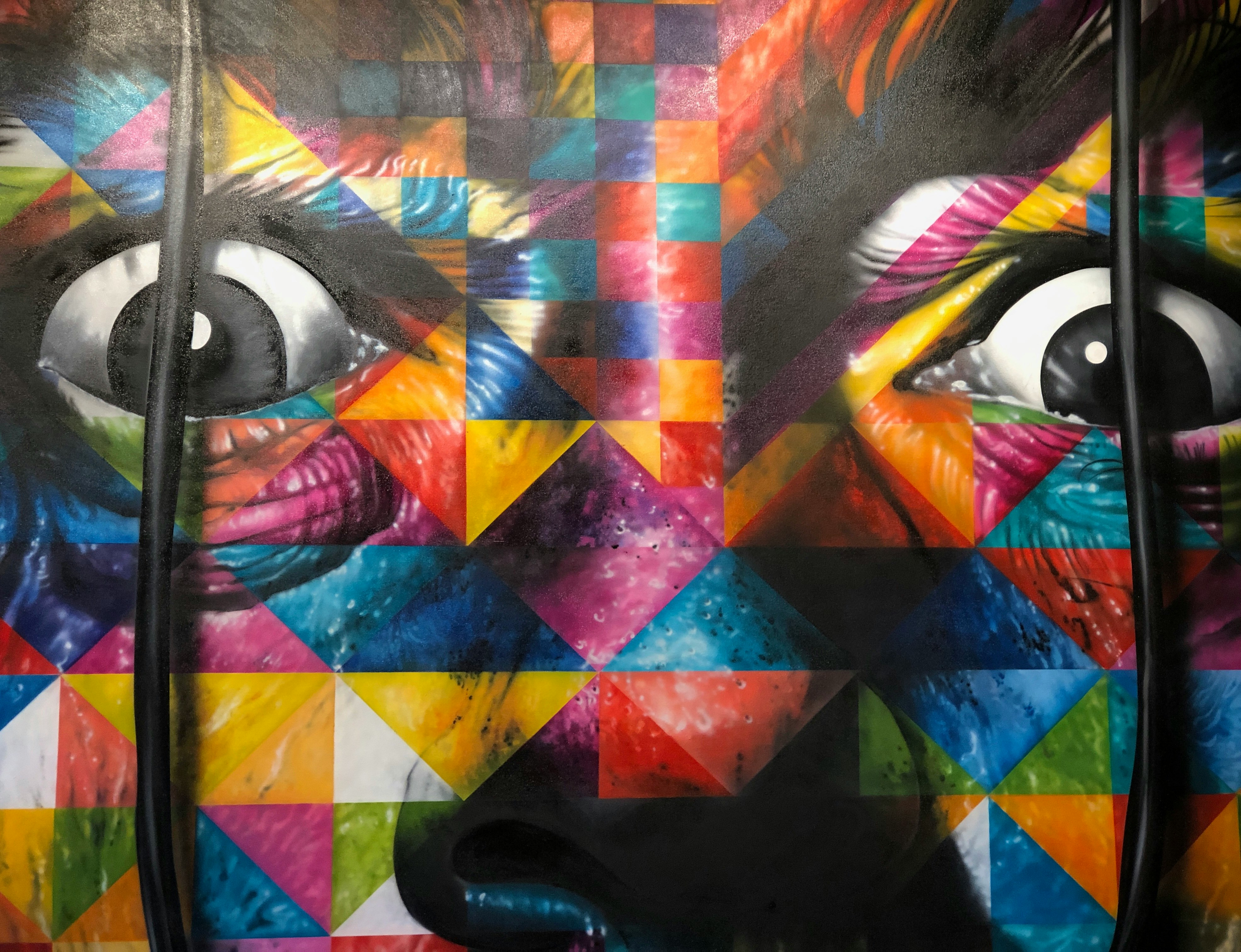Licensing Your Art for Merchandise: A Beginner's Guide
by WriteSeen
Licensing your art for merchandise can turn your creativity into a lucrative venture. This process lets you transform your art into a financial asset, extending its reach far beyond an original piece.
We’ve created a guide tailored to help you seamlessly enter this thriving market:
- Discover how licensing your art for merchandise can expand your audience and income.
- Get insights into art licensing agreements and choose what aligns with your goals.
- Learn strategies to protect your work and attract potential licensees.
Understanding Art Licensing and Its Benefits
Art licensing isn't just a buzzword. It's a gateway to new possibilities for artists eager to expand their reach. By licensing your art, you provide companies the rights to use your designs on various merchandise. This approach opens doors to untapped markets, ensuring you resonate with a diverse audience without continually creating new pieces.
Key benefits of art licensing:
- Increased exposure: Licensing helps place your art on everyday products—think apparel, stationery, and home décor—offering day-to-day visibility to a wide range of customers.
- Residual Income: With properly negotiated licensing agreements, you enjoy ongoing revenue from sales, allowing your art to work for you even when you’re not actively creating.
- Brand Building: Working with established brands elevates your reputation, building trust and credibility in new markets.
- Creative Flexibility: Licensing allows experimentation with various styles and themes, letting you evolve artistically while meeting different market demands.
At WriteSeen, we understand the pressures artists face. Licensing is part of the transformation from a struggling artist to a thriving brand, presenting a world of opportunity just waiting to be embraced.

Types of Art Licensing Agreements
Choosing the right licensing agreement aligns your creative aspirations with business goals. Whether you’re after exclusivity or prefer flexibility, there's an agreement that fits like a glove. Understanding each type helps tailor your approach and strategize effectively.
Exclusive vs. Non-Exclusive Agreements
-
Exclusive Agreements: These offer higher royalties but limit you to working with one licensee, which can create a unique brand proposition. If you're aiming for niche market success or collaborating with high-profile brands, exclusivity might be your path.
-
Non-Exclusive Agreements: Perfect for artists keen on flexibility and exposure. They allow multiple partnerships, enabling broader market penetration. Your artwork can appear across various platforms, maximizing its potential impact.
Real-world examples amplify the power of agreements:
- Artists who choose exclusive paths often find success in industries that value uniqueness, such as luxury goods.
- Non-exclusive agreements are prevalent in mainstream consumer products, where mass appeal and widespread distribution matter most.
Each choice involves trade-offs. Think about where you want your art to go and who you want it to reach. We make it easier to connect with professionals ready to showcase what makes your work stand out.
How to Protect Your Art Before Licensing
Securing your creations is essential before stepping into licensing. Without proper protection, exposure can lead to misuse. Safeguard your work to maintain control and ensure all potential profits flow back to you.
Copyright and Legal Measures
-
Register Your Creations: Registration isn't just a box to tick. It provides legal standing and potentially strengthens your position in disputes. Once your creations are secured, innovation can flourish without fear.
-
Use Watermarks and Digital Signatures: These deter misuse. A simple step, but effective in listing rightful ownership wherever your art travels online. Make digital proof part of your strategy.
-
Digital Rights Management (DRM): This technology controls how your art is distributed digitally. It's a powerful method to secure your work across platforms.
Documenting every step of your creation process offers a reliable backstory, should you ever face challenges.
Protecting your art ensures it remains yours. Without risk, feel free to let creativity fly.
Our platform highlights the balance between showcasing talent and maintaining ownership. Your art, your rules—made simple to enforce.
Creating a Portfolio That Attracts Licensees
Your portfolio is your first handshake with potential licensees. Make sure it speaks volumes about your capabilities. An impactful portfolio paints a picture of how your art elevates products and transforms ideas into reality.
Building an Effective Portfolio
-
Organize by Themes: Showcase versatility or focus on niche expertise. Themes help brands visualize your art on their products, seamlessly connecting your work to their needs.
-
Highlight Quality Images and Context: Clear, high-resolution images paired with thoughtful descriptions can demonstrate your art’s adaptability. Show how your work comes to life, whether on a t-shirt or a living room wall.
-
Incorporate Testimonials and Case Studies: Highlight past successes. Testimonials and examples of how your art increased brand value can tip the scales in your favor.
Updating frequently keeps things fresh. As trends shift, your portfolio should echo these movements, ensuring it remains a top choice for industry leaders looking to collaborate.
Your portfolio isn’t just an archive of work; it’s a living, breathing testament to your journey as an artist. Mark your space and let brands see your unique value.
Strategies for Finding and Approaching Potential Licensees
With a strong portfolio and legalities secured, the next step is connecting with companies eager for fresh ideas. This stage isn't about casting a wide net—it's about targeting the right audience.
Effective Outreach and Networking
-
Research and Identify Target Companies: Focus on brands whose aesthetics align with yours. Knowing your art’s strengths guides you to firms that’ll appreciate and utilize it best. Licensing International databases can be a great resource.
-
Craft Personalized Pitches: Personalize each proposal to illustrate how your art integrates with a company's brand identity. Direct, tailored pitches often yield better outcomes than generic ones.
-
Leverage Trade Shows and Industry Events: These are goldmines for exposure. Face-to-face interactions can solidify relationships better than any email could.
-
Utilize Online Networks: Platforms like WriteSeen streamline your path to industry professionals, allowing exploration of dynamic collaborations within a secure, specialized community of creatives.
Art licensing is more than a transaction. It’s about building lasting partnerships. A thoughtful approach to finding and reaching out ensures you connect with the right collaborators.

Navigating Contracts and Negotiating Terms
Understanding and negotiating art licensing contracts can seem daunting. But clear, well-negotiated terms lay the groundwork for successful ventures. Know your rights and make informed decisions to ensure beneficial outcomes.
Key Contract Elements to Consider
-
Duration: The length of the contract impacts income and flexibility. Shorter terms offer room for renegotiation, while longer terms provide stability.
-
Territory: Define where your art can be used. Region-specific agreements can maximize reach and relevance, ensuring your art is showcased in markets where it best fits.
-
Exclusivity: Does the licensee need sole rights to your art, or can it be used by multiple companies? Weigh the benefits based on your strategic goals.
Contracts should protect both parties. Engage legal experts to assist deciphering complex clauses and ensure clarity. Professional guidance mitigates risks and enhances confidence while you focus on expanding your creative footprint.
Ensure contracts reflect your goals and protect your rights. Negotiation isn't an end; it's a beginning.
Our platform is dedicated to guiding you through these negotiations, connecting you with trusted professionals who can help solidify winning terms for your art.
Maximizing Income Through Pricing and Royalty Structures
Pricing your art strategically guarantees that you’re not leaving money on the table. Your royalty structure should reflect the art’s value and the market dynamics.
Choosing the Right Royalty Model
-
Flat Fees: Provide stable income. Best suited for short-term projects or where predictability is your primary aim.
-
Percentage Royalties: Link income to sales success. As sales grow, so do your earnings—ideal if you believe in the product's marketability.
-
Benchmark Market Rates: Research competitors to set competitive yet rewarding pricing. Understand the standard market rates to price your art accordingly.
Diversification is equally crucial. Expand your style range and tap into different markets. Tailored art for targeted demographics can unlock multiple income streams, increasing both reach and influence.
Strategies for maximizing art value:
- Customization: Offer personalized versions at higher price tiers.
- Limited Editions: Boost value by creating scarcity and exclusivity.
Maximizing income isn't just about numbers; it's about aligning your brand value with market expectations.
Real Artists, Real Success: Case Studies
Case studies of successful artists offer invaluable insights. Learn from those who’ve turned licensing into their launching pad.
Learning from Success Stories
-
Jane Doe’s Seasonal Collections: Partnering with major retailers, Jane expanded her art's reach by aligning it with seasonal themes. Her collections became staples in seasonal catalogs, boosting both visibility and income.
-
Social Media’s Power: An artist leveraged social media to draw in fashion industry deals. Their art style and consistent branding resonated with followers and captured the attention of style influencers.
These stories aren't just motivational—they’re blueprints. Each success highlights adaptability, strategic partnerships, and the relentless push to mesh creativity with market preferences.
Your story, too, can become a case study of success. Learn, adapt, and create your path.
Future Trends and Opportunities in Art Licensing
Art licensing is dynamic, with emerging trends that artists should watch. Staying informed about these changes ensures you remain relevant and capitalize on new opportunities.
Emerging Trends
-
Augmented Reality (AR): Integrating AR with your art elevates the consumer experience, allowing deeper engagement and interaction.
-
Eco-Friendly Trends: As consumers shift to sustainable practices, art aligned with eco-conscious themes is gaining traction.
-
NFTs and Digital Art: Non-Fungible Tokens (NFTs) offer a secure platform for digital art, providing traceability and a new revenue stream through licensing.
Embrace these trends to future-proof your art licensing strategy. Anticipating market demands positions you as a forward-thinking artist ready to meet future challenges.
Master these shifts with confidence. Integrate them to unlock untapped potential and redefine your art's reach in an ever-evolving market landscape.
Conclusion
Licensing your art for merchandise is more than a revenue stream—it’s a strategic move that transforms your creativity into a thriving business. With the right agreements, protection, and positioning, your art can live across apparel, decor, and lifestyle products while maintaining your creative integrity.
As you build your portfolio and connect with the right partners, remember that every pitch, contract, and licensing deal is a reflection of your brand. Align your work with platforms and collaborators that respect your vision and help expand your reach—without compromising your voice.
At WriteSeen, we make this journey easier. Join WriteSeen to access a global creative network, connect with professionals, and turn your art into a lasting legacy. Discover tools, resources, and opportunities that help you license smarter and grow stronger.
TAGS